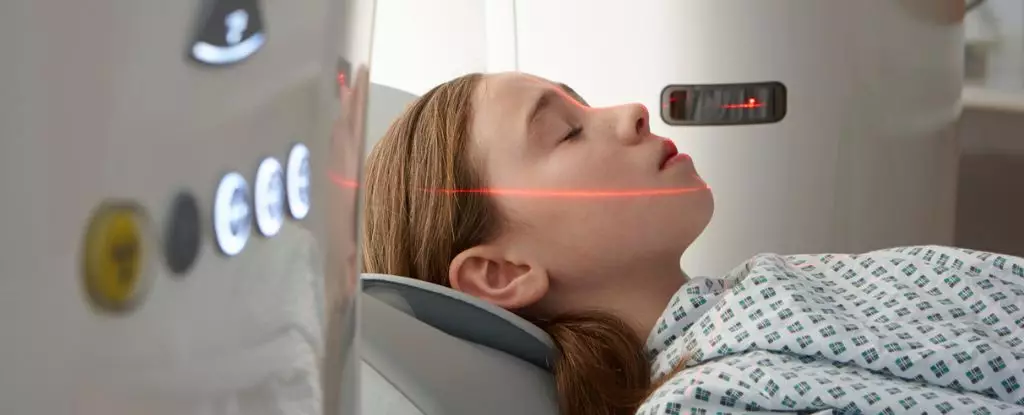In recent years, computed tomography (CT) scans have become a staple in medical diagnostics across the United States, revolutionizing how doctors identify underlying medical conditions. With their capacity to provide intricate images of the human body, CT scans can detect an array of potential health issues—from tumors to trauma—often saving lives in critical situations. However, as the annual number of CT scans rises dramatically—reportedly over 30% since 2007—so too do concerns about the potential health risks associated with their use. The introduction of low-dose ionizing radiation through these scans has stirred a significant debate among health professionals and researchers regarding the potential long-term implications on patient health.
The Hidden Risks of Radiation Exposure
While the immediate benefits of CT scans are generally recognized, researchers like Rebecca Smith-Bindman from the University of California, San Francisco, have initiated discussions regarding the seemingly minor but cumulative risk of cancer associated with repeated exposure to low doses of ionizing radiation. For the individual, the probability of developing cancer from a single CT scan is often deemed negligible; nevertheless, the sheer volume of scans administered can lead to alarming statistical conclusions at the population level. Recent projections indicate that CT scans conducted in 2023 alone could account for approximately 103,000 new cases of cancer in the U.S., placing them alongside other known cancer risk factors such as alcohol consumption.
The primary concern arises from the fact that, while high doses of radiation are conclusively linked to cancer, the connection between low-dose radiation and cancer remains largely theoretical. Predictions around cancer risks are often founded on data derived from populations exposed to significant radiation events, such as atomic bomb survivors or those affected by nuclear power plant failures. This reliance on extrapolated data raises questions about the validity of such projections concerning routine medical procedures like CT scans.
Analyzing the Data
The estimations regarding future cancer cases attributed to CT scans stem from meticulous data collection across numerous hospitals and outpatient centers, highlighting the rapidly evolving landscape of medical imaging. The UCSF International CT Dose Registry has compiled anonymized data from 143 facilities, serving as a critical resource for evaluating radiation exposure levels. Critics argue that while this data-driven approach strengthens the case for acknowledging potential cancer risks, it also underscores the need for more nuanced understandings that consider various factors including patient demographics and device specifications.
Children and young adults are indicated to be more susceptible to radiation exposure risks, with studies suggesting substantial lifetime cancer risks, particularly thyroid cancer in pediatric patients. Given that the majority of CT scans are administered to adults, it raises ethical questions about safeguarding vulnerable populations from unnecessary radiation exposure.
Balancing Risks and Benefits
Despite the apprehensions surrounding CT scans, it is essential to recognize the critical role they play in modern medicine. CT imaging not only enhances diagnostic accuracy but can also prevent misdiagnoses that could lead to dire health consequences. Health specialists like Pradip Deb from RMIT University stress the importance of weighing these clinical benefits against any potential risks associated with radiation. This balanced perspective prompts medical professionals to be vigilant—prioritizing patients’ health needs while minimizing exposure to unnecessary procedures.
The crux of the matter lies not in condemning CT scans, but rather in promoting responsible usage. As radiographers, such as Naomi Gibson, advocate, the emphasis should be on ensuring that CT imaging remains clinically justified. This approach is pivotal in progressing toward a medical environment where patient safety is paramount while maintaining diagnostic efficacy.
Looking Ahead: The Need for Vigilance
Although the theoretical risks tied to low-dose ionizing radiation from CT scans have stirred debate, the larger conversation should also acknowledge the advancements in medical imaging technology that allow for reduced radiation exposure. It is an opportune time to reconsider protocols around CT scans, exploring innovations that may offer similar diagnostic benefits without the associated risks. Continued research is essential for establishing clearer guidelines informed by comprehensive, long-term studies.
In this complex landscape, patients are tasked with understanding the implications of CT scans while trusting the expertise of their healthcare providers. The discussions surrounding radiation exposure must be transparent and informative, thus empowering patients to make educated decisions about their healthcare journeys. Only by maintaining open dialogues and embracing innovative practices can we harness the life-saving potentials of CT technology while minimizing the risks that accompany its use.

